Category: Design
2

Una persona coge un mortero de piedra y madera
Tools
“Vengono analizzati oggetti d’uso semplici, processi di transformazione autogestiti (come l’agricoltura e l’artigianato) e le culture materiali extraurbane, come campi d’indagine. Il metodo antropologico viene usat come strumento di analisi e d’interpretazione. La sperimentazione diretta (il fare come pensare), la manualità, l’uso ed il comportamento vengono usati come strumenti di riappropriazone personale e dell’ambiente.”
Superestudio, 1978
Utensils are simple use tools that accompany our daily life. They define our daily acts, habits and behaviors. Using them, we appropriate our environment and ourselves. To inhabit a territory is to also repeat a series of actions in the everyday.
Moreover, utensils designed in stone connect us to past rituals, to the artisanal traditions and processes of Peru and the transformation of vegetable and mineral organisms through bodily energy. Activities like carving a stone or pressing seeds connect us with nature. These utensils were traditionally a part of everyday life in the Andean and Amazonian worlds, in preparing their meals, medicine, dyes and the hallucinogens employed in their rituals.
The body is a fundamental part of this ritual. Unlike electronic utensils, these mortars, batans and squeezers require that we respect the time it takes for our body to conduct the preparation in union with the objects.
As we use the utensils, we merge with the natural processes of plants and stone. Upon ingesting food prepared with these objects, we absorb the sun, water and earth’s minerals’ energy, and reclaim the slow ritual of nourishment.
The mortars, batans and squeezers are made of granite, a rock whose hardness allows to softly extract the vegetable essences from plants without destroying their color, flavor and internal structure. The density of the rock prevents artifacts from absorbing the scents of food, making a quick wash enough to work through different herbs, seeds, fruits and so on.
The utensils are contemporary pieces created through the study of artisanal traditions and techniques and employing local materials.
Text translation
Nicolás del Castillo
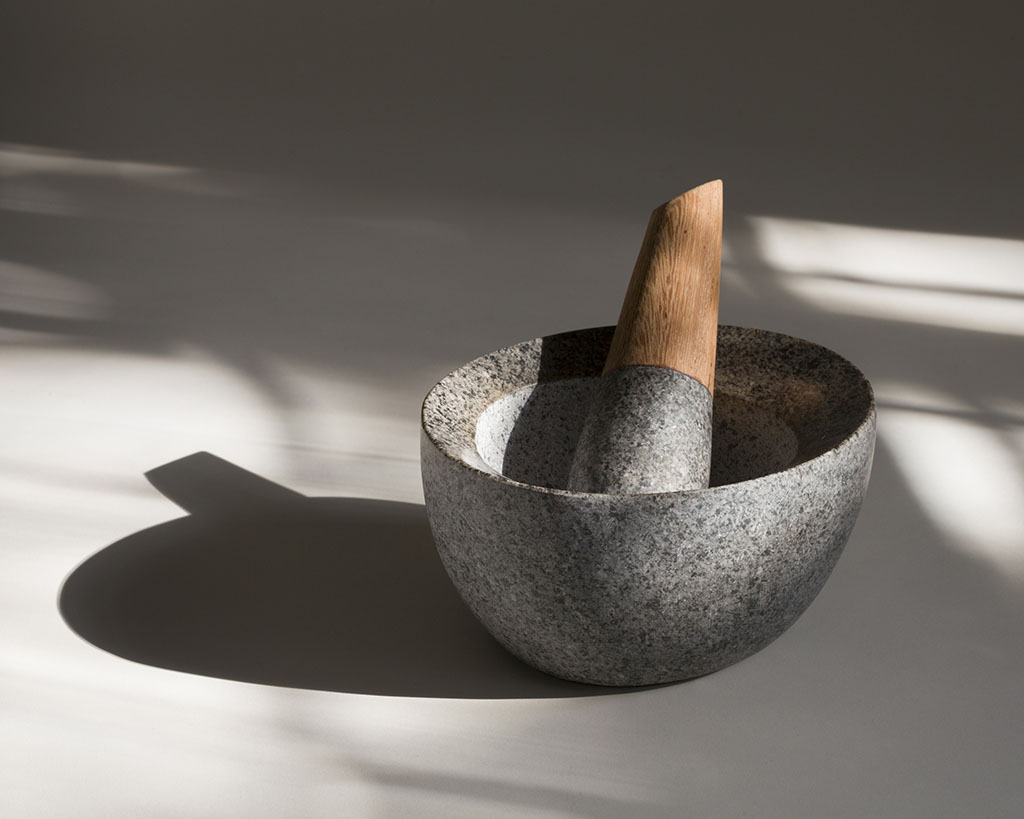
Mortero de granito de Huaycán y madera amazónica. Handcrafted mortar made with granite from Huaycán and amazon wood.
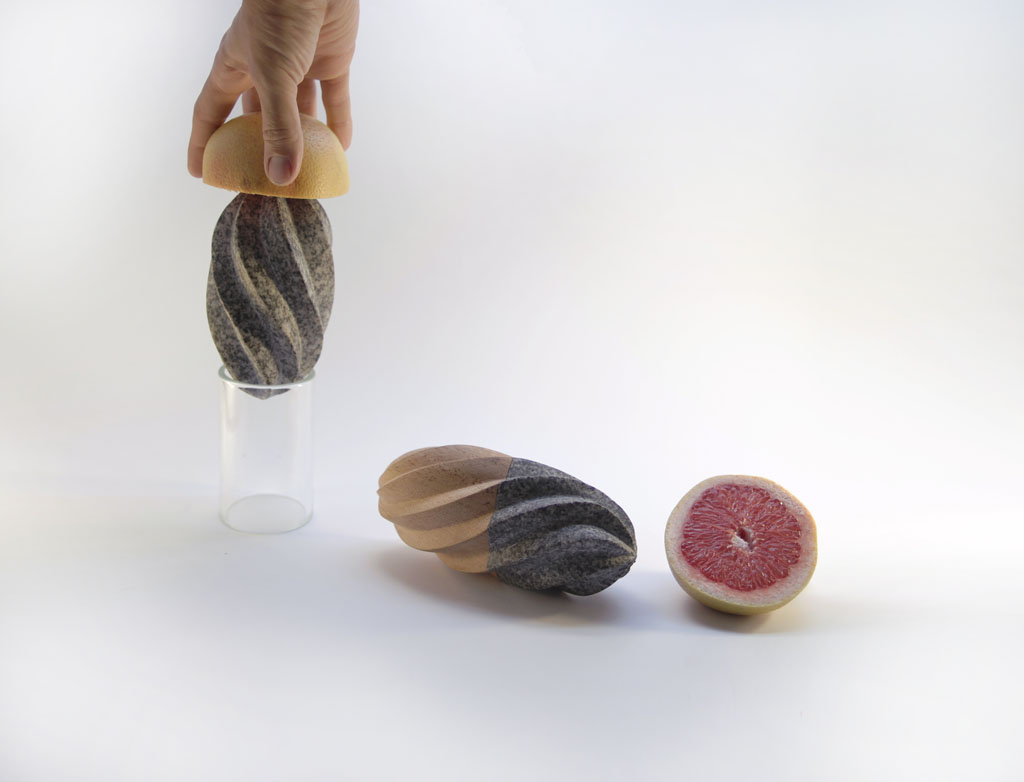
Exprimidores de granito de Huaycán y madera amazónica. Handcrafted squeezers with granite from Huaycán and amazon wood.
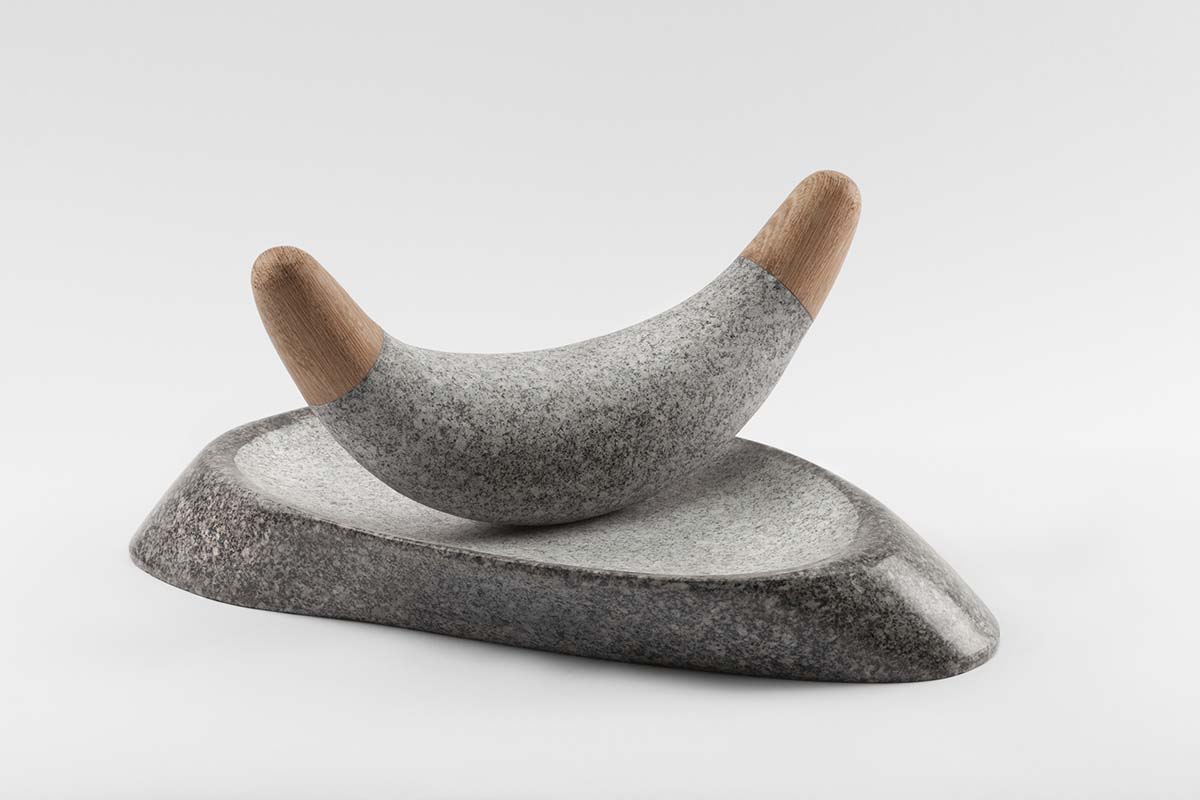
Batán de granito de Huaycán y madera amazónica. Handcrafted batan made with granite from Huaycán and amazon wood.



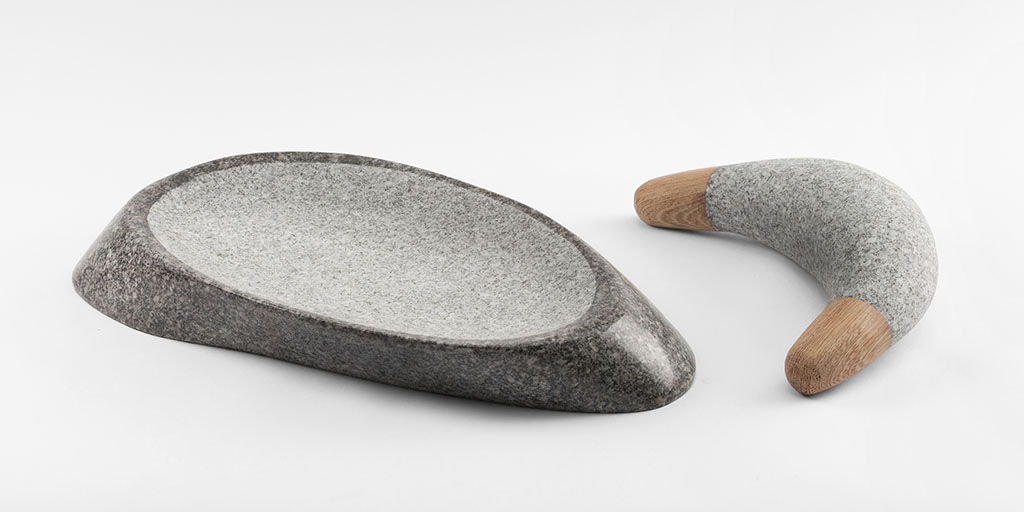
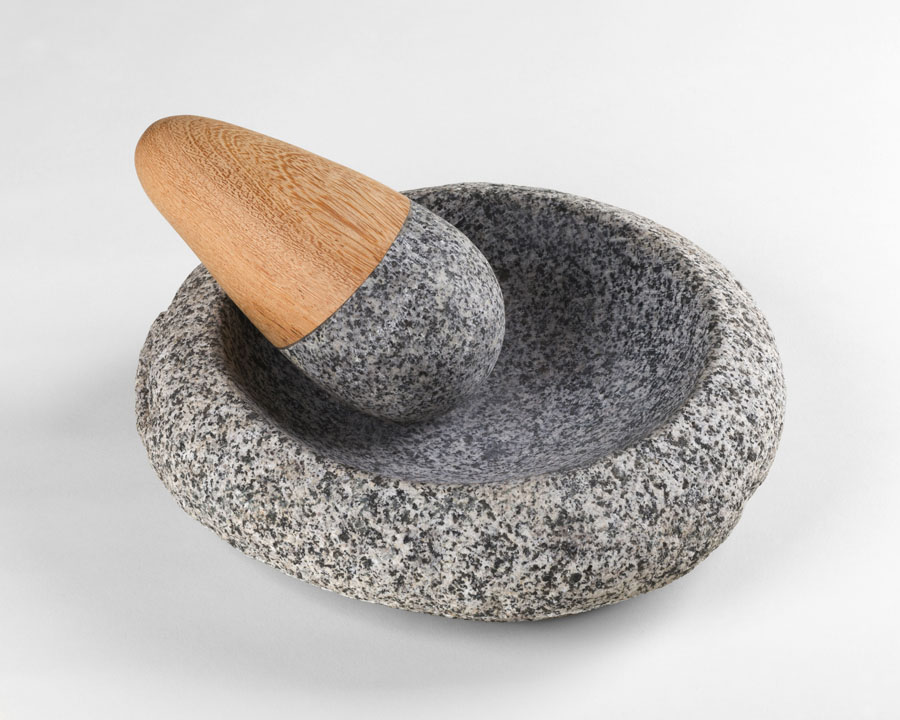
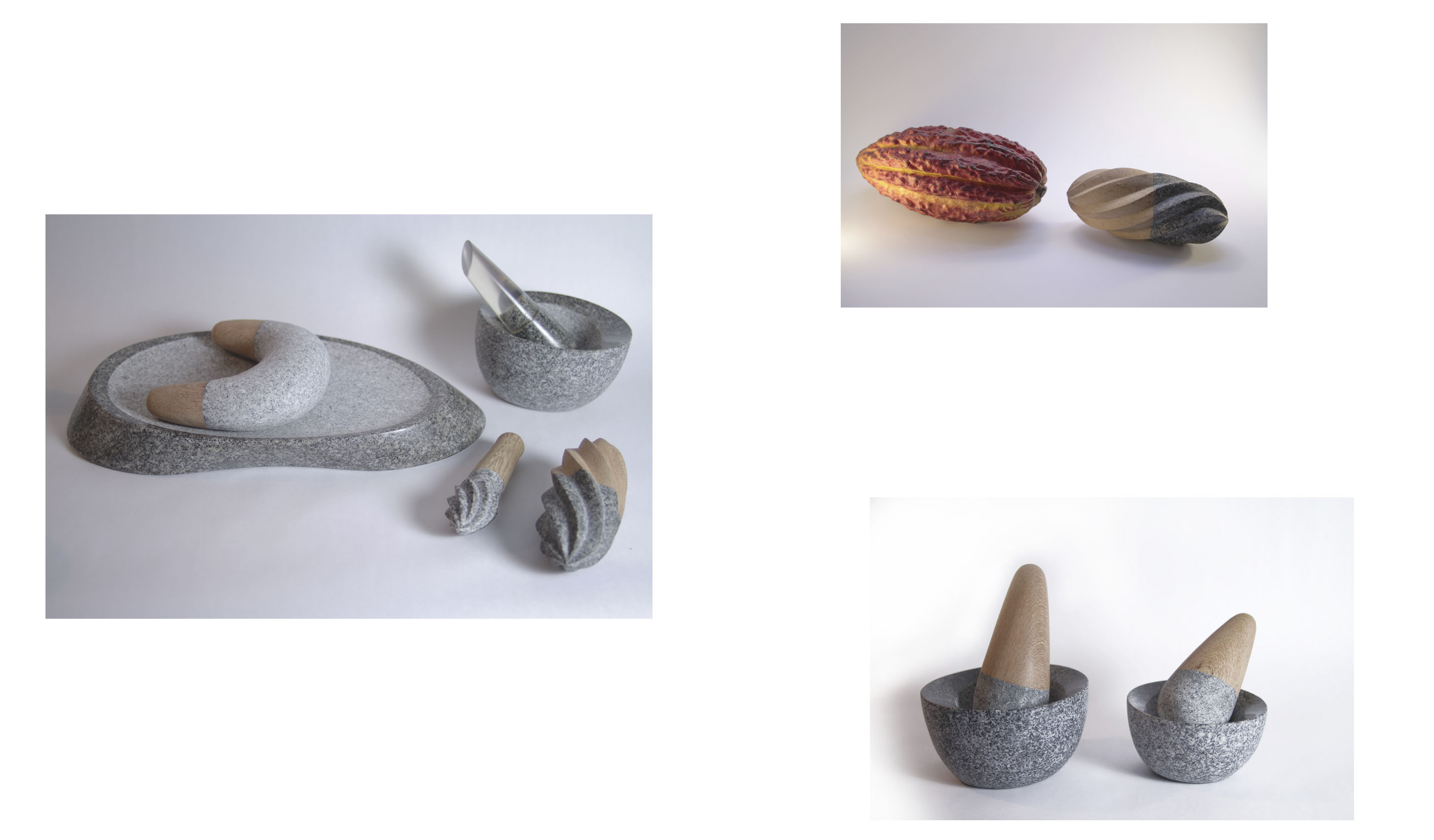
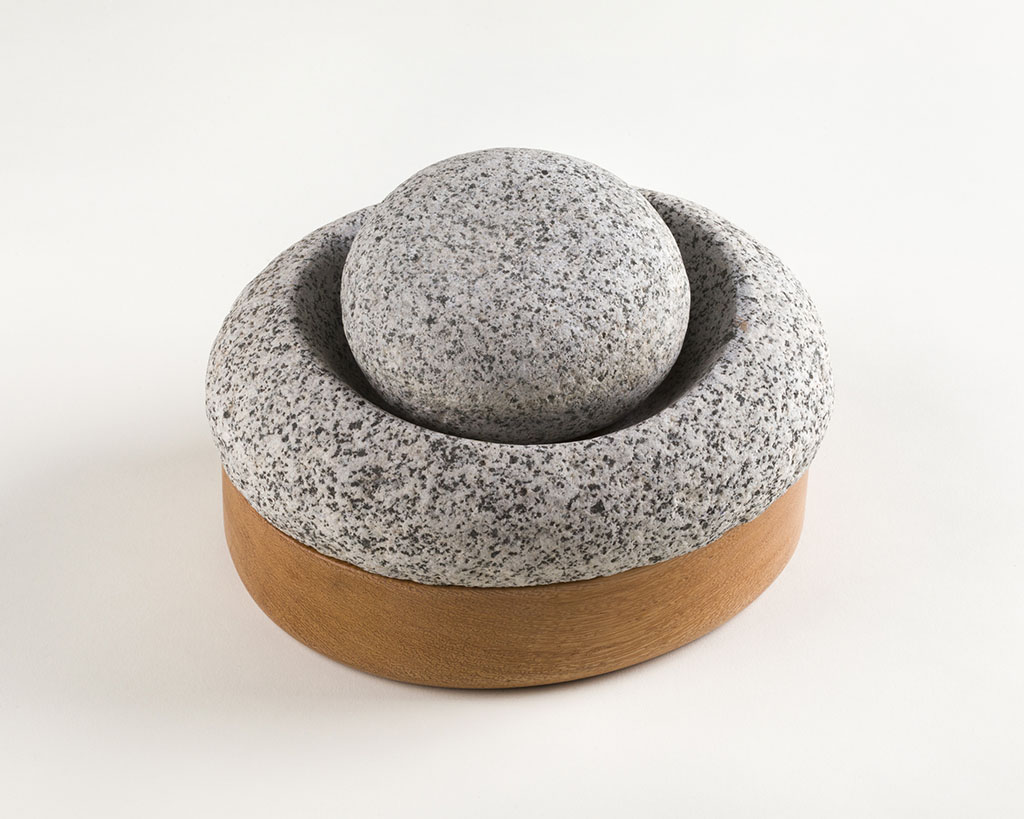
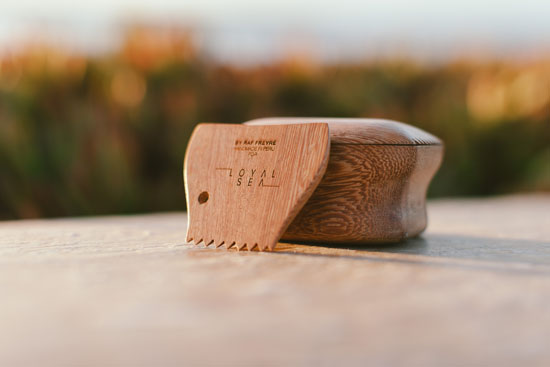
Kit de cera
We met Loyalsea in 2017. The project celebrates the diversity in surf through empowering stories and imagery for media and brand partners. The team works with an engaged community of creators and individuals such as surfers, photographers and nature lovers. For those creators, Loyalsea wanted a special gift that connects them with their favourite pastime – surf – and nature.
Surf has a particular tool for an almost ritualistic moment: the waxkit. This small gadjet must appear right at the transition from land to water. Putting on wax and preparing the board is an action that, for Loyalsea, deserves special treatment. We believe that design can give a new sense to moments like this, it can reestablish the connection between self and nature, and enrich our experience of time. It was an interesting challenge to design a waxkit for their community.
We share with Loyalsea founder, Katharina Kieck, our love of the sea and the knowledge that through design we can have a positive relation with nature, avoiding the use of plastic. This is why the waxkit is made from hand-carved huayruro wood, a tree native to peruvian Amazon, and the accompanying comb has a braided hemp cord. The wax-box closing system has two small embedded magnets that can keep the lid tight when on the go, and can open easily by sliding sideways.
For the studio, this collaboration with Loyalsea was especially rewarding, and it is part of our ongoing exploration on our relation with water sources. Water is a fundamental element in our life.
CLIENT
Loyalsea
DESIGN
Rafael Freyre
PRODUCTION
Mari Retamozo
WOODMASTER
Luis Mucha
PHOTOGRAPHY
Daniel Espirito Santo
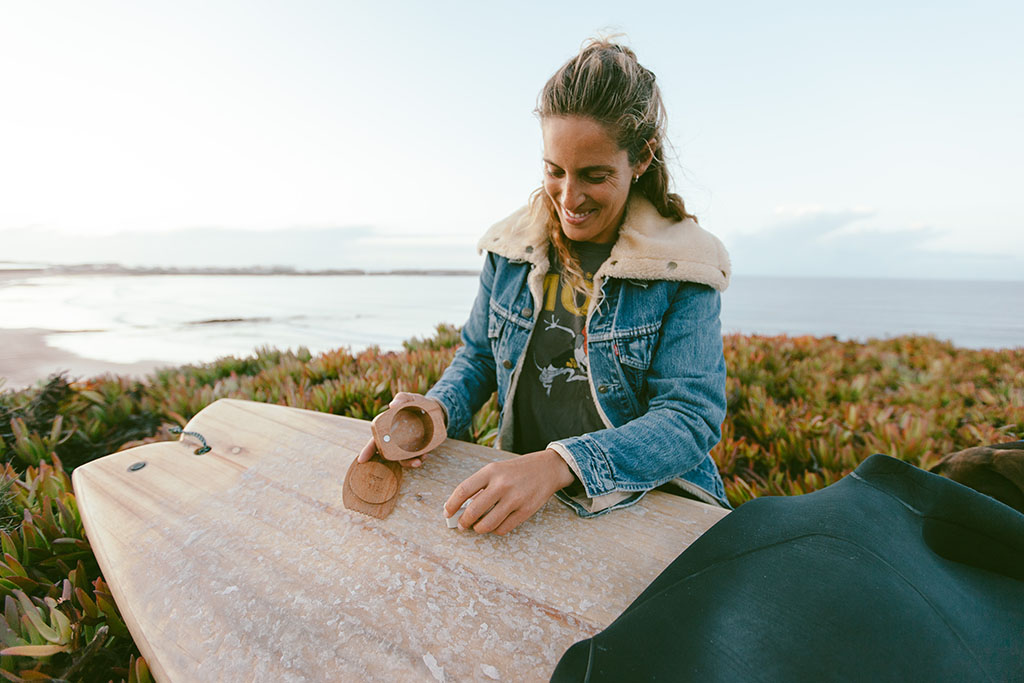
Fusionarse con la naturaleza. A través del surf, el wax kit diseñado en colaboración con Loyal Sea nos reconecta con el mar. Merge into nature. Through surf, this wax kit made in collaboration with Loyal Sea reconect us with the ocean.
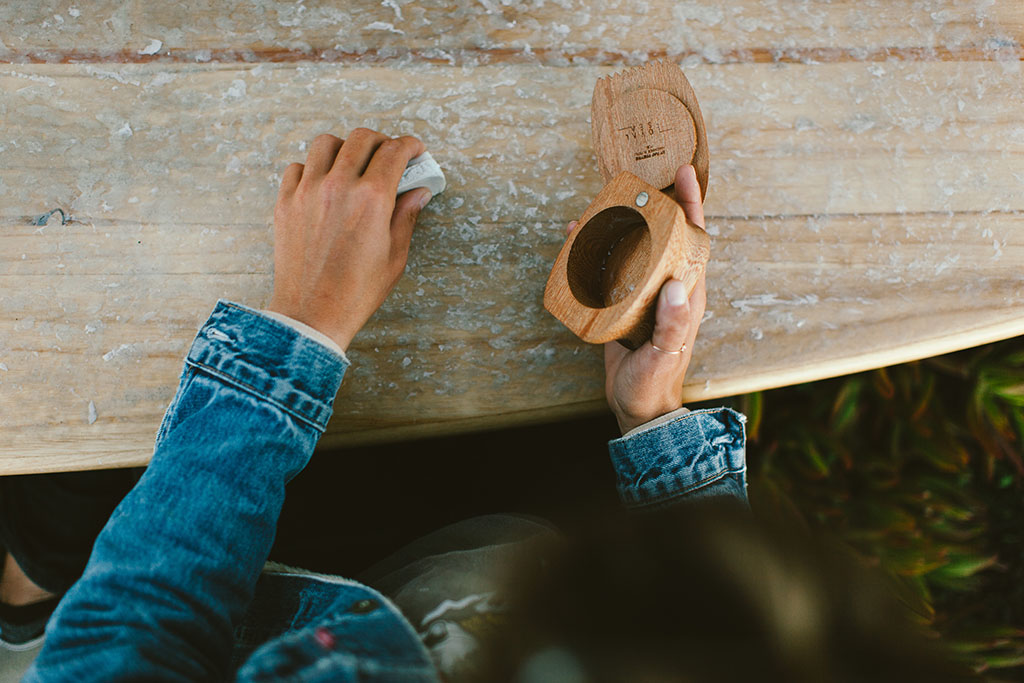
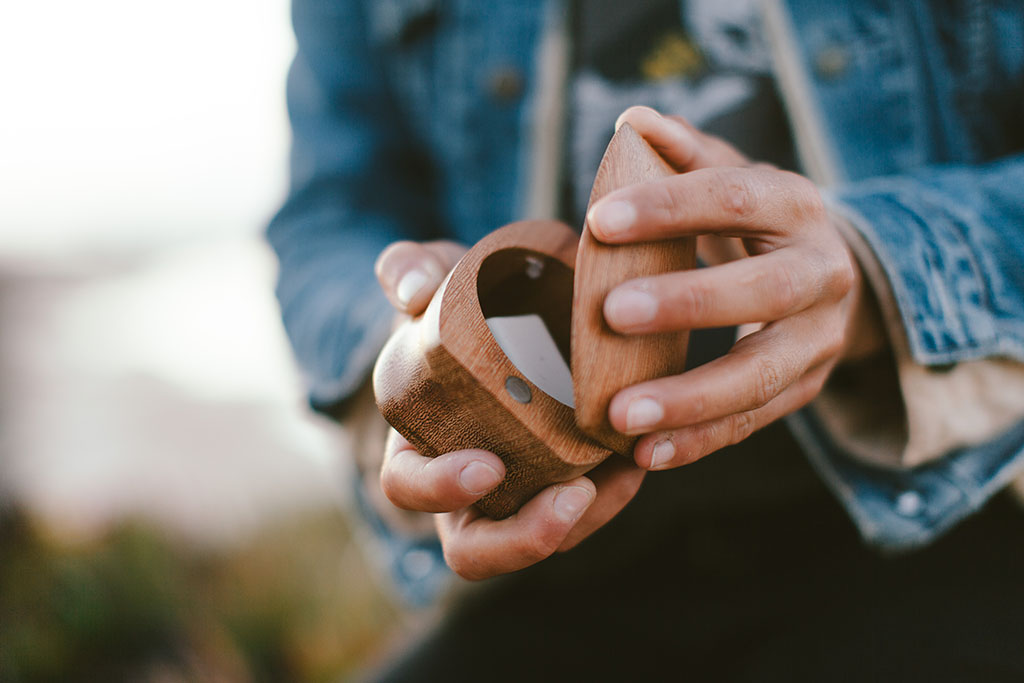
Diseño Sostenible. Wax kit de madera amazónica. Sustainable design. Amazon wood wax kit.
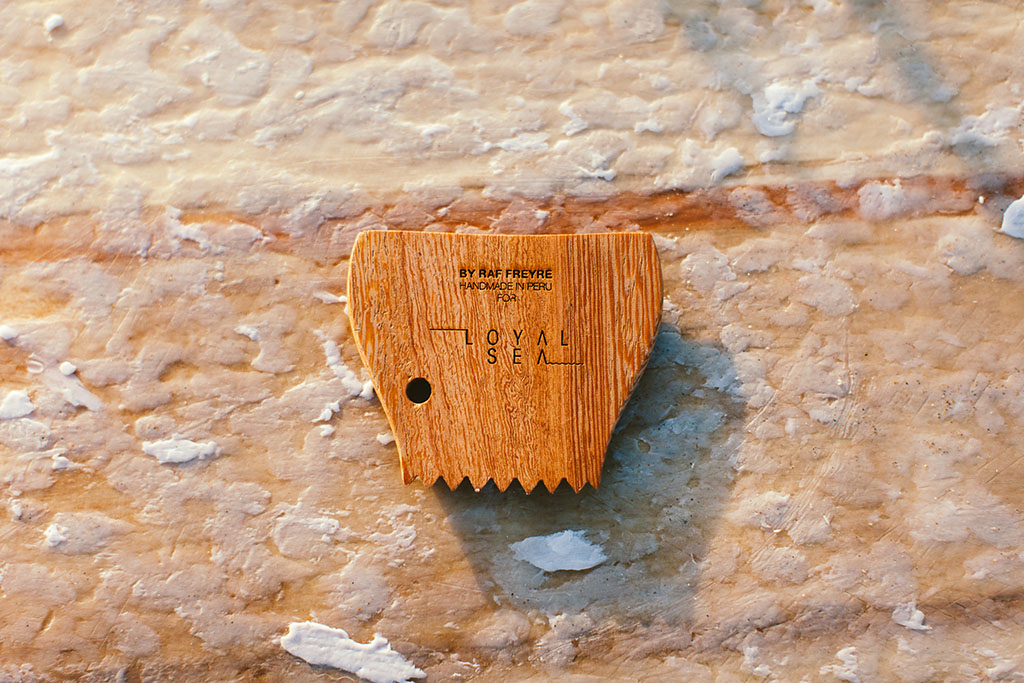
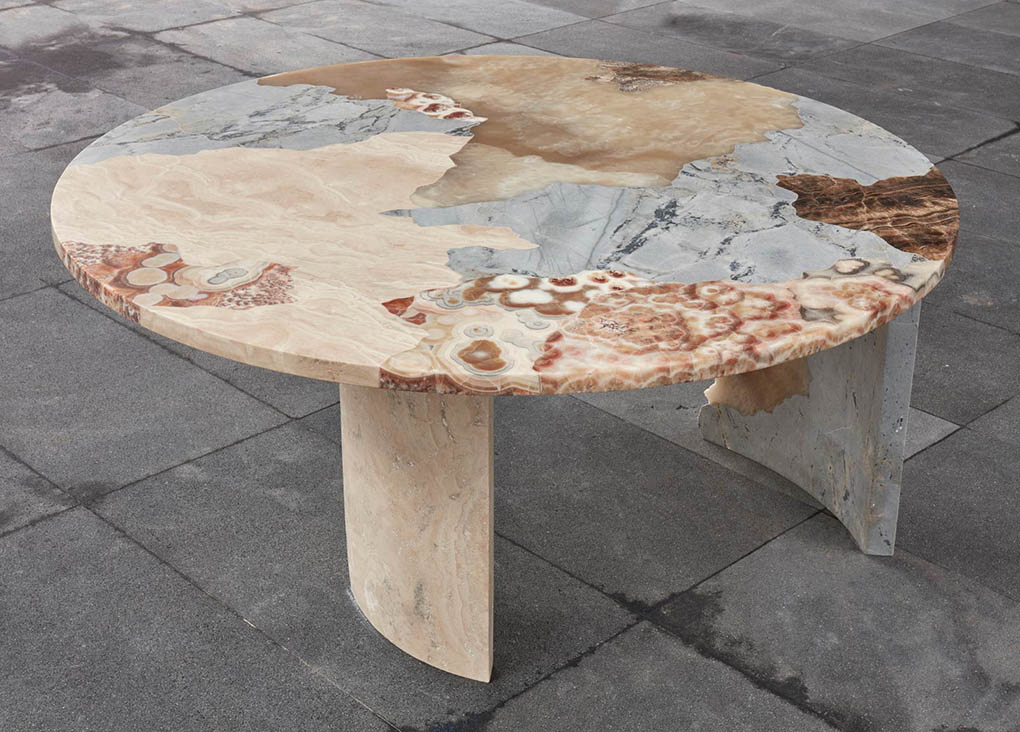
Soil Map
We set forth a rethinking of contemporary Peruvian art and design, with stone pieces inspired by the Pre-Columbian period and the relationship between its civilizations and the landscape. Sculptural and functional, the pieces bring us closer to the history, materiality and the lytic diversity of the Andean territory while revealing the persistence and precision required in joining stone blocks.
ANDEAN HISTORY AND TERRITORY
A decade ago, inspired by his relationship to the landscape, Rafael Freyre began experimenting and creating contemporary pieces based around the lytic materiality of Peru. The works speak to us of a vastly extensive mineral landscape and of millenary transformation processes in the history of humanity and the earth.
There was a time in the history of the Peruvian territory in which stone was the axis of a majority of people’s lives. The Inca culture, one of the chief pre-Columbian societies in America, achieved a fundamental integration of the mineral both into their daily and sacred experience. Their architecture and objects were developed from the transformation of the highlands territory, creating high-precision structures characterized by a meticulous conjoining of stone blocks. Stone, other than making for the Andean landscape, was a symbol – a living being, like the mountains themselves.
TWO SIMULTANEOUS LOOKS AT THE SOIL: AERIAL AND SUBTERRANEAN VIEWS OF THE TERRITORY
The pieces are based on research of aerial views and geological studies of the Andes and the Peruvian Amazon. These two perspectives create large-scale images of the territory that help us understand the place we inhabit. The aerial point of view unveils traces and accidents in the terrestrial surface on a horizontal plane, while a geological look shows the vertical cuts and superimpositions that stack up over time. Both perspectives combined bring us closer to the complex natural composition of our habitat, to long-lasting processes and vast dimensions.
RF STUDIO & CENTRAL RESTAURANTE
The search to reconnect with the lytic diversity of Peru was complimented by the studio’s relationship to chef Virgilio Martínez of Central restaurant, whose recent menu explores Peru’s varying altitude ecosystems and biodiversity. The studio first designed a series of dishes for Central, and later created sculptural stone tables that evolved into the centerpiece elements of the restaurant’s interior design.
For the studio, the tables represent a continued quest to create objects that can bring people into contact with the geography they inhabit, in this case through the ritual of food. The research positions the Andes as the great shaping element of Peruvian biodiversity, as rocks descend from the highlands down the course of rivers to the desert and the Amazon.
ARTISANAL PROCESSES AND RECYCLING
Understanding the reality of mineral extraction in Peru was important for the creative process. Currently available technology does not allow for the extraction of large stone blocks. Extraction is mostly carried out by local artisans who hand-cut small pieces from hills located across different altitudes in the Peruvian territory.
In observing these working techniques, the studio spotted an opportunity to create and collaborate with artisans: by joining small stone fragments discarded by the big industries, we can symbolically reconstruct a new geology and artisanally recreate the lytic tradition of Peru. From its inception, the process saw the involvement of master Roberto Román, whose family, hailing from Ayacucho, has been working with stone for three generations. His workshop, located in the Huaycan district to the east of Lima, is located close to the quarry where the studio obtains the granite for its pieces.
TRANSFORMATION OF TRADITION AND LYTIC DIVERSITY
The project is not an attempt to return to the past, nor does it mean to essentialize the ancient civilizations who inhabited Peru. The pieces, made of stones originating in different places in the Peruvian Andes, aim to reveal the immense diversity contained in a territory: its natural, social, historical and sociological processes. Just like small, varied mineral fragments come together, different ecosystems, traditions, times and realities are symbolically united.
CONCEPTO Y DISEÑO
ESTUDIO RF
TRABAJO EN PIEDRA
ROBERTO ROMÁN
MATERIAL
PIEDRAS DE DIVERSOS ESTRATOS GEOLÓGICOS DE LOS ANDES
FOTOGRAFÍA
JUAN PABLO MURRUGARA
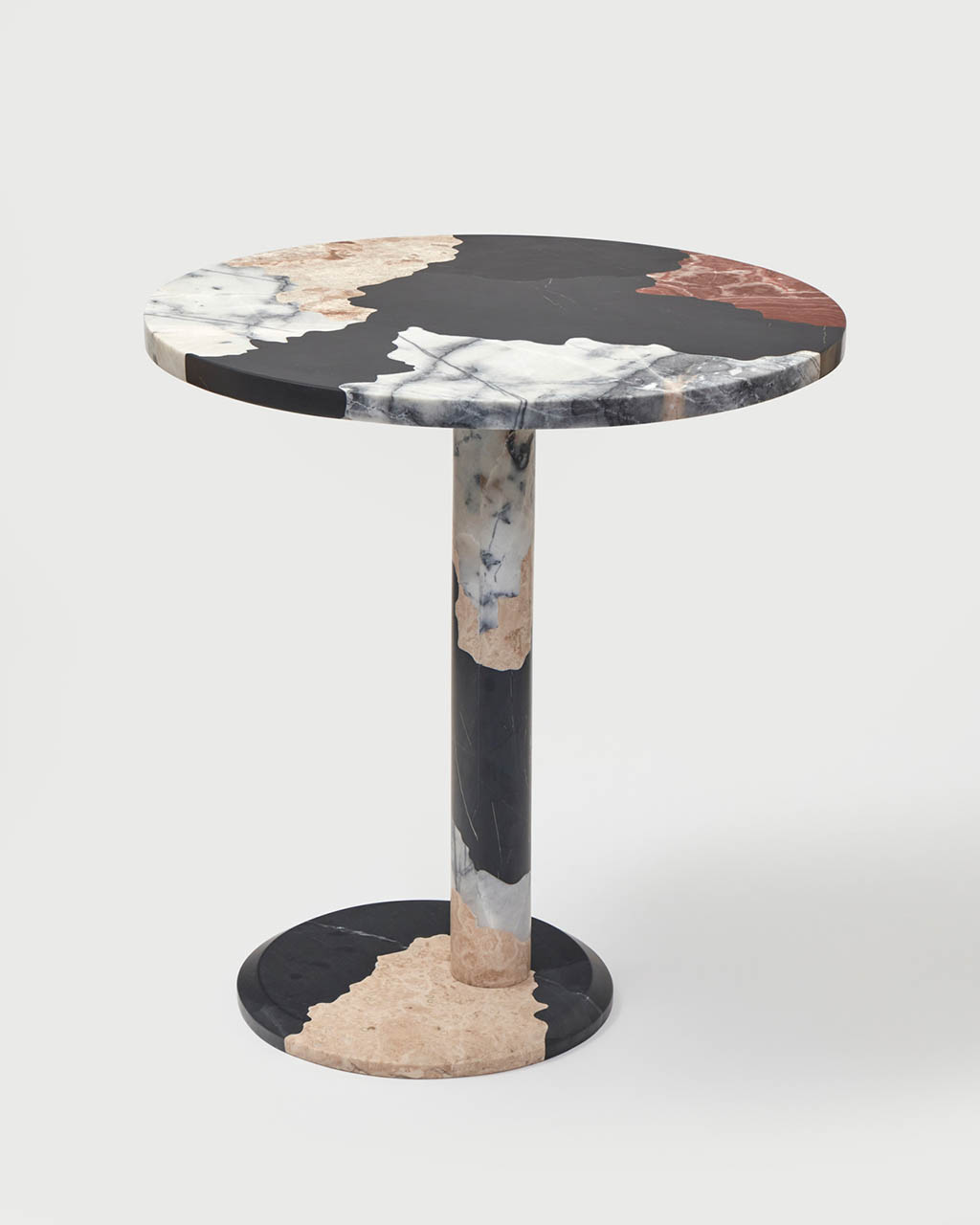

Espacio Diseño
Espacio Diseño is a collective initiative comprised by Lucia Cuba, Verónica Majluf and Rafael Freyre.
Each period in our history is inlaid with the way in which the space is inhabited, how the bodies dress and how ideas are visually conveyed.
Espacio Diseño aims to create a place of meeting and dialogue surrounding design. Its first activity took place furing the Art Lima 2019 international art fair, in the form of a travelling exhibition spanning three works: Líneas de Nasca (Nasca Lines, VM&), Tres vistas aéreas del Ande y la Amazonía (Three aerial views of the Andes and Amazon, Rafael Freyre) and Estados Unidos de… (The United States of…, Lucía Cuba).
Despite hailing from different walks in design and having different relationships with the discipline, Majluf, Cuba and Freyre share a common need to create new relations and critical approaches to the expressions of design in Perú.
The project also organized Espacio y prácticas: 3 miradas sobre el diseño en el Perú. (Space and practice: 3 views on design in Peru).
An article by El Comercio on Espacio Diseño.
Pieces exhibited
The posters for Línea Nasca (Nasca Line) are part of a project developed by Verónica Majluf and vm& graphic studio (2017). Línea Nasca is a product series inspired by the line that sets forth a contemporary look at one of the most visible expressions of Peruvian history. The eleven products in the series are an invitation to see, understand, imagine and play with the Nazca lines.
The project was presented as part of the Nasca exhibition at MALI (Lima), at the Rietberg Museum (Zürich), Bundeskunsthalle (Bonne) and Fundación Telefónica (Madrid).
Inkjet print (Gliclée)
Matt fiber Hahnemuhle 200g paper
110 x 156 cm
RAFAEL FREYRE
The work of Rafael Freyre explores the creation of spaces and objects from materials original to their context. The selected pieces, Tres vistas aéreas de los Andes y Amazonía (Three aerial views of the Andes and Amazon), aim to reestablish contact between the body and the lytic materials from different locations in Perú– Ayacucho and Junín – and the transformation processes of these natural elements over time, by taking shapes related to geology, archaeology and artisanal work. His work poses questions on the continuity between both constructions, as well as the links between people and the places they inhabit.
Diverse stones from the Peruvian Andes
Artisanally carved
75 x 120 cms
Construction: Roberto Román
Photography: Juan Pablo Murrugarra
Lucia Cuba’s Estados Unidos de… (United States of…) brings together the interpretation and creation of wearable objects and opportunities for dialogue within the aesthetic and textile. The work juxtaposes narratives about the forced sterilization of women in China, the United States and Perú, which are critically linked and converted into three pieces that form a single visible body of contexts marked by state violence, discrimination, stigma and the extreme silencing of women’s and minorities’ voices.
The piece means to spark multidimensional ‘and translocal dialogue about issues of gender, will and politics, touching on various audiences and alloweing for a new expanded understanding of the condition of women and their political bodies in today’s world.
“United States of…” is part of the actions for project “Artículo 6: narrativas de género, fortaleza y política” (Article 6: Narratives on gender, strength and politics).
Alpaca, satin ribbon and cotton
Woven tapestry
75 x 140 / 100 x 120 / 80 x 90
About us
Verónica Majluf is a graphic designer and the first Peruvian designer to be a member of AGI (Alliance Graphique Internacionale). With a career spanning over 20 years, Majluf has been awarded by magazines such as Communication Arts and Étapes and selected as one of the 25 designers that defined a new view on the city of Hannover in Germany (2010), among other accolades and participations in international events. She currently leads vm&, a graphic design studio together with Ralph Bauer.
Lucia Cuba is a fashion designer and scholar. Her work presents fashion and clothing as devices to meditate on the world. Cuba has an interest in gender issues, biopolitics and global practices regarding fashion. She has developed projects related to health, activism, education and the study of non-Western fashion systems. She currently works as Professior of Fashion at the Parsons School of Design at the New School University and as a freelance designer.
Rafael Freyre is an architecture designer and the creative director for this studio. He seeks to reestablish contact between the body and the materiality of natural surroundings and artisanal processes through everyday life artifacts.
Espacio Diseño was made possible by initiative of Armando Andrade and the support of El Comercio.
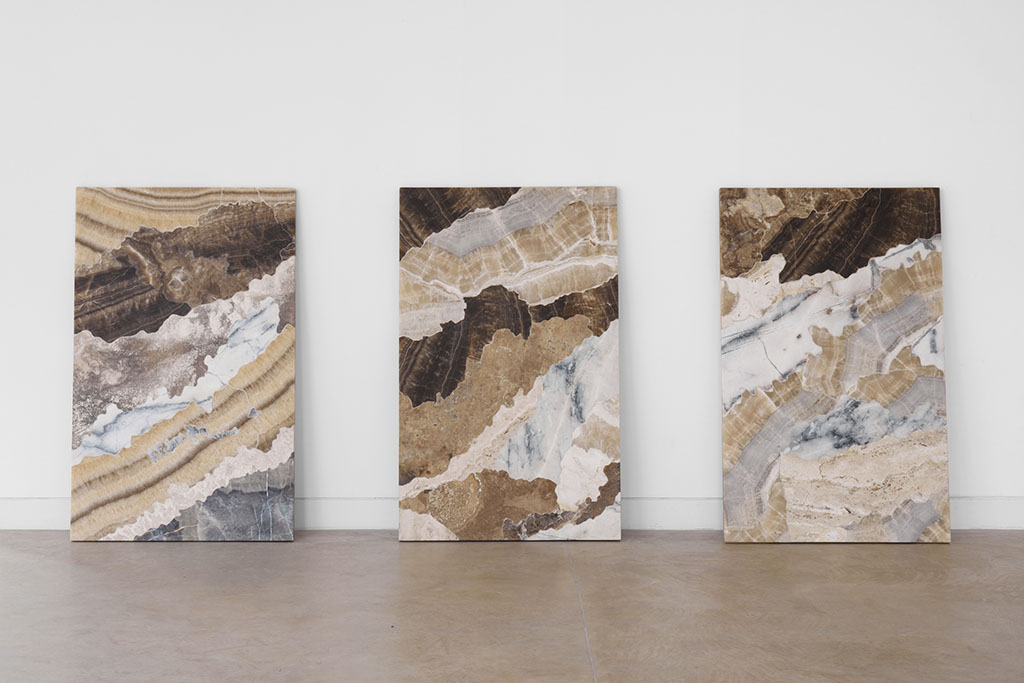
"Tres vistas aéreas de los Andes y Amazonía" es una pieza trabajada a mano por los artesanos del taller de Roberto Román en el distrito de Huaycán, al este de Lima. "Three aerial views of the Andes and Amazon" was handcrafted by artisans from Roberto Román's workshop located in Huaycán district, at the east of Lima.
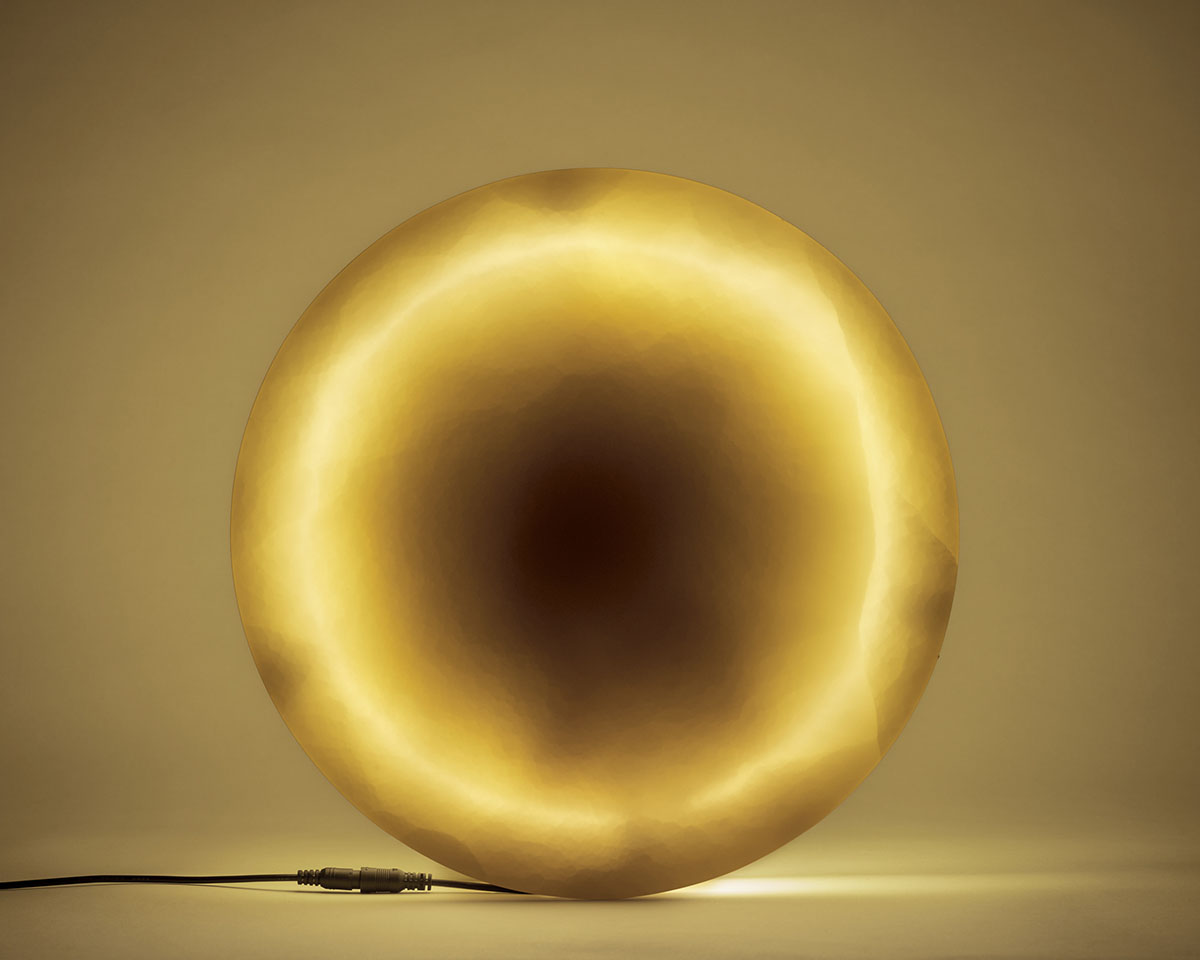
"Lámpara de Ónix de Ayacucho". Diseño contemporáneo en piedra peruana. Contemporary design with peruvian stone.
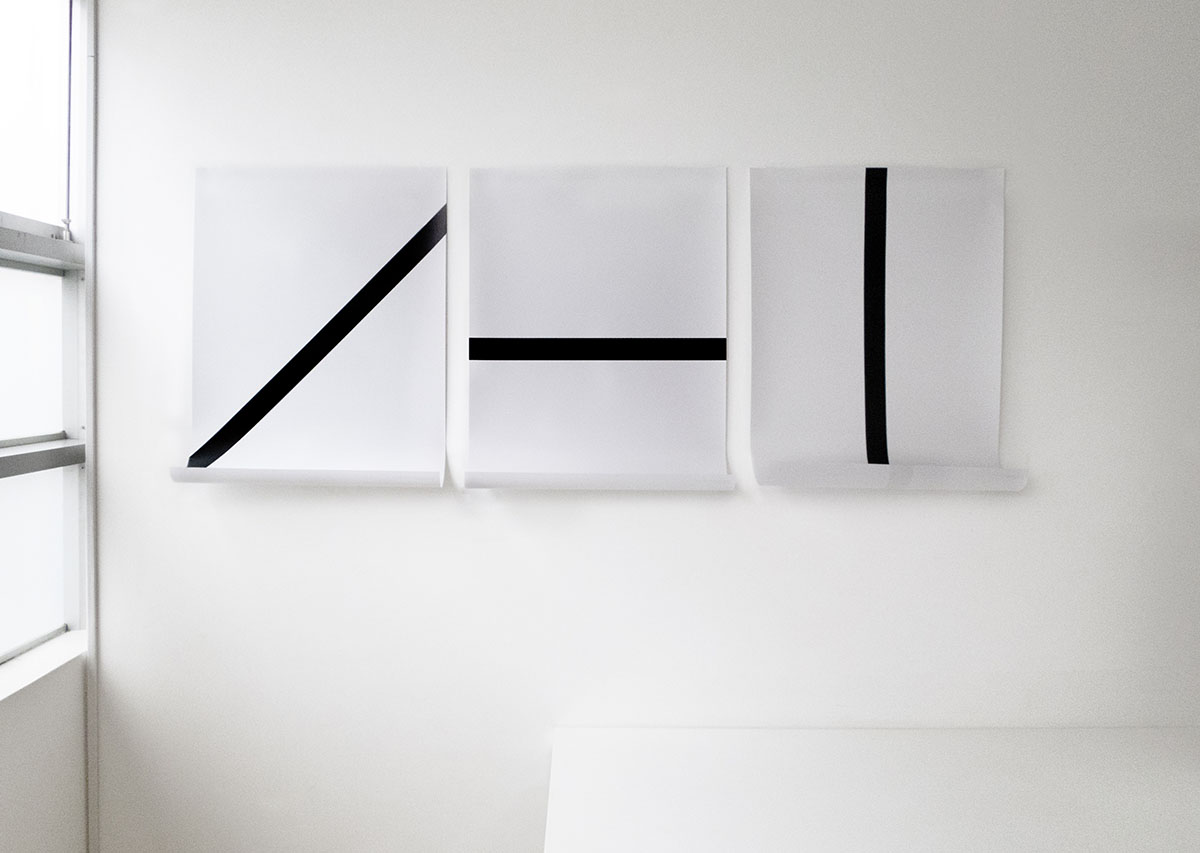
"Línea Nasca" traslada en un lenguaje contemporáneo los geoglifos trazados por la cultura precolombina Nazca en el desierto de Ica (Perú). “Nasca Line” translates the geoglyphs drawn by the pre-Columbian Nazca civilization in a contemporary language.
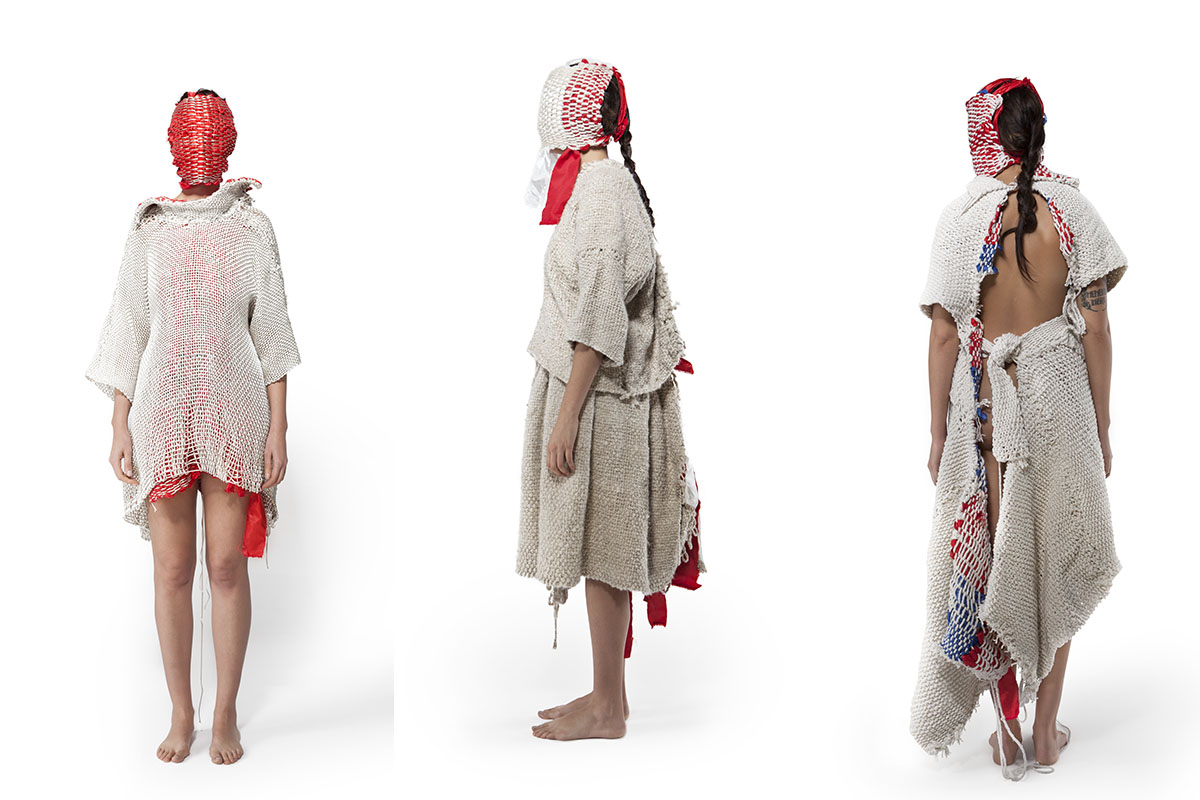
"Estados Unidos de..." de Lucia Cuba. Diseño textil que recoge problemáticas en torno al género y la política. "United States of ..." by Lucia Cuba is a textile design that collects issues around gender and politics.
OPEN STUDIO
At the end of the year we open Studio RF doors to exchange and share experiences from different projects and pieces in progress that articulate design, contemporary and traditional art, and architecture.
We think of our studio as a space where we can reflect from the point of view of design about current social, political and environmental issues. We seek to rethink our relationship with natural materials, local ecosystems, and construction processes, as well as the environmental and social impact implicit in our practices.
We welcome you to join us on 14th, 15th and 21th December, from 11am to 7pm, at Jirón Santa Rosa 310, Barranco.
For further information: info@raffreyre.com
